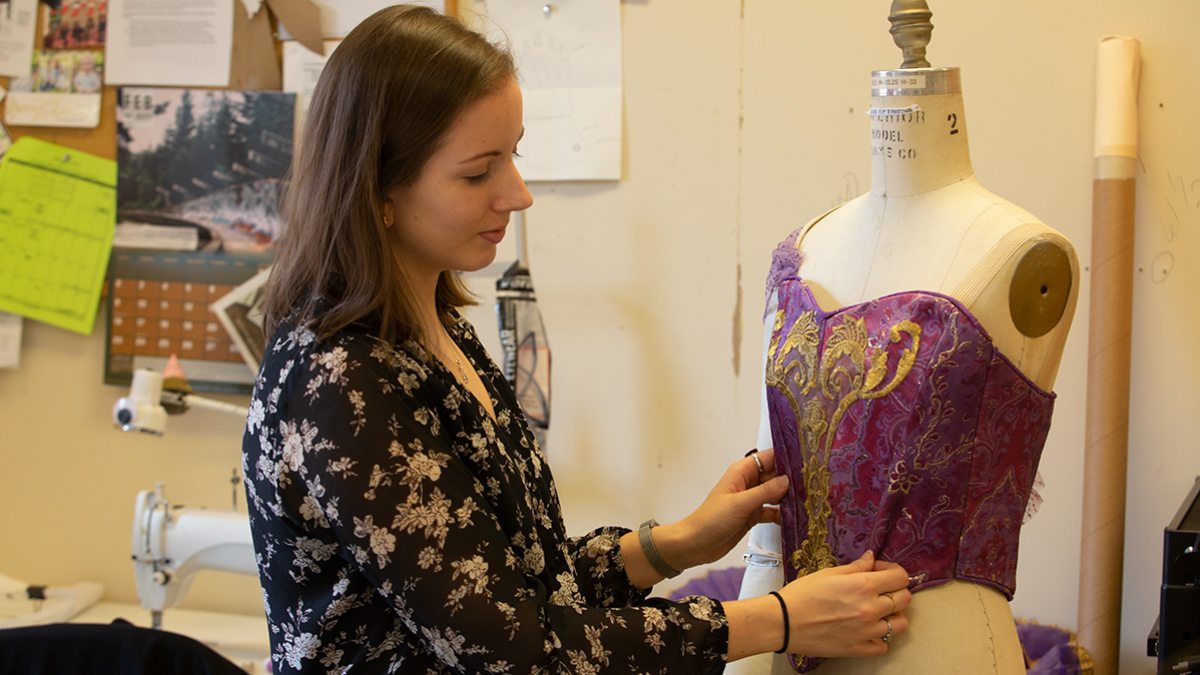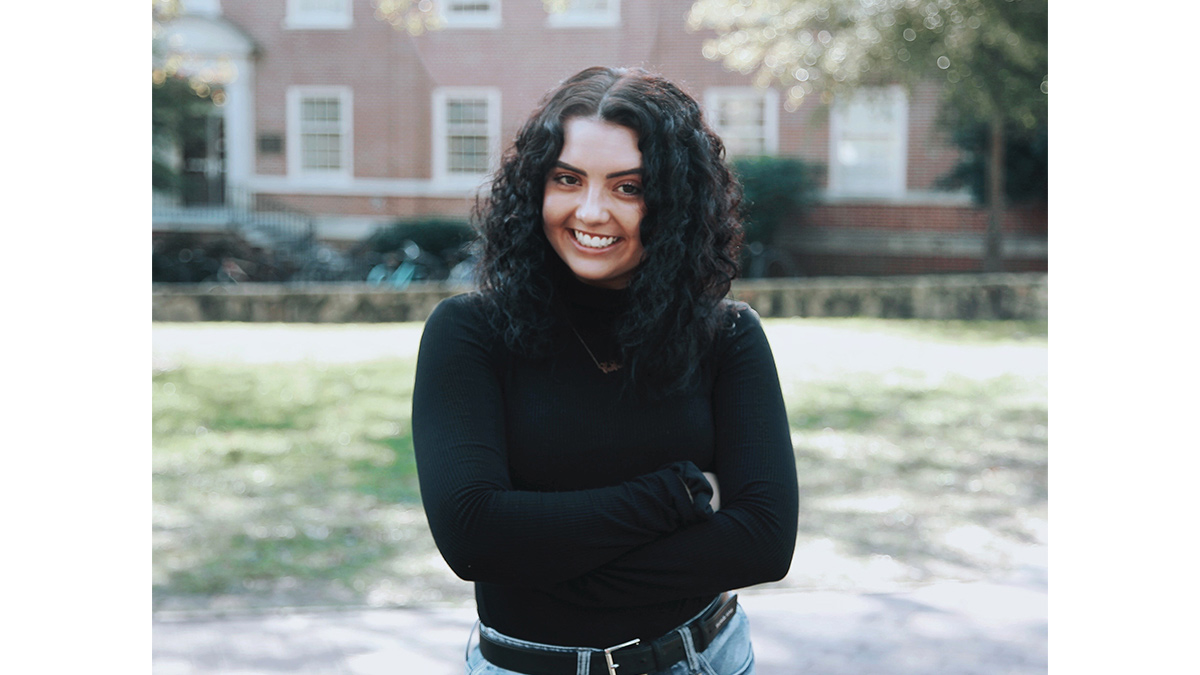From chemistry to costumes, Jane Reichard finds a common thread in science and art
After earning a degree in biochemistry as an undergraduate, graduate student Jane Reichard pursued her passion for costume production at Carolina, where she has been bringing a scientific eye to costume creation.

Many students start their college careers full of clarity. The same was true for UNC-Chapel Hill graduate student Jane Reichard when she arrived at Berry College in Georgia for her undergraduate degree in biochemistry in 2011.
She was already smitten with everything science: the opportunities for innovation, the mental conditioning of punching through problems, the interplay of systems and elements in nature and the body. The Charlotte native thought she might follow in her brother Jeff’s footsteps and come to Carolina after college for pharmacy school.
It’s not that Berry College changed her mind about science — or her desire to continue the Tar Heel tradition — as much as it transformed how she saw the scientific world.
When her work-study assignment at Berry College placed her not before a microscope, but in front of a bobbing needle of a Pfaff home sewing machine in the theatre department, she surprised herself by being a quick study. She’d known how to mend a button – but that was it.
“As I learned to sew, the projects they let me help with became more and more complex, and I had a knack for it that I never knew. If you think of the costume designer as an architect, the costume producer is the engineer,” she said. “I was that engineer.”
In learning to work the material and designs she was given into part of the magic that others would see on a stage, she found herself considering the common threads in art and science, and how one influences the other.
“So often, sewing is about solving problems. You have to break down the design into its core elements and make discoveries as you work: maybe the stitch length is off, or the machine needs a different needle. You drape a costume, and it doesn’t hang on an actor the way you want it to, what went wrong? There’s a lot of experimenting and revising. Chemistry teaches you how different elements can work together – that helps you see sewing differently. If you’ve studied math, you have a good concept of pattern drafting.”
Reichard graduates this spring with an MFA in costume production from Carolina’s dramatic art department, having draped, stitched, crafted and constructed costumes for regional theatres across the country, including the Santa Fe Opera, Milwaukee Repertory Theater, the Glimmerglass Festival in Cooperstown, New York, and Playmakers Repertory Company at Carolina.
Reichard has found an equally good fit with teaching and mentoring undergraduate students, as well as serving in leadership roles with Carolina’s Graduate and Professional Student Federation.
Watching other students find the surprises along their sometimes set-in-stone paths and challenging them to see where their interests can take them has been a fulfilling part of her time at Carolina’s classrooms, makerspaces and costume shops.
“It’s something I always tell my students now: getting a well-rounded education and being curious about everything around you only enhances you as a person.”




